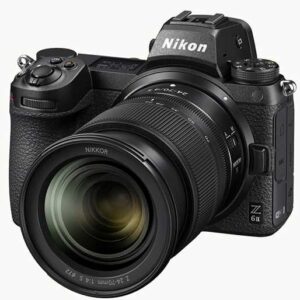With the contraction of the camera market continuing, albeit at a slower pace, most camera company executives would probably like to see one or two fewer camera brands competing for the shrinking demand – so long as it wasn’t the one they are employed by!
While it might sound treacherous/counterintuitive/bloody-minded to say so, the photo industry would almost definitely be better off if there were one, or ideally two or even three fewer competing brands. In the last 10 years camera sales have shrunk to around 10 percent of what they were. It would mean more sales for the remaining brands; provide them with economies of scale and the resources and motivation to continue innovating and marketing; and there would be less money tied up in inventory on the retail side.

Nikkei Asian Review deputy editor, Masamichi Hoshi, wrote last year that excessive competition was damaging the camera business. It’s not just smartphones: Smartphones are not the only reason Japanese camera makers, who had established an oligopoly nearly everywhere around the world, have come to this point. Japanese industry, which has a penchant for competing against its own products, can also blame itself.’
Olympus is more than half out of the market these days, having flick-passed the venerable Olympus camera business – but curiously not the actual brand – to JIP: ‘a fund that serves as a receiver when a company cuts out a business division or subsidiary to the outside (curve out).’ It maintains a small financial interest in the JIP venture.
The new Olympus entity ‘OM Digital Solutions’ would at this stage be the odds-on favourite to do the others a favour by stepping away entirely. It’s currently conducting the kind of noisy PR campaign you engage in when you haven’t got any new products to sell but feel the need to inspire confidence. But is it a confidence trick?

OM Digital Solutions executives have been extraordinarily communicative of late, promising the industry things that will make us all go ‘oh’. We just have to wait a year or so: “I can’t tell you when (new products will be released), ‘but I’m working hard now,” OM Digital Solutions’ Chief Technology Officer Setsuya Kataoka told Japanese business website Asahi. He confirmed that ‘more than one’ (so, two?) products were coming, and some of them will have ‘special features’ that will make fans say ‘oh!’
It looks as if Olympus left the new business with nothing in the product pipeline except hopes and dreams. The last actual product to be released by Olympus, the $11K+ Olympus M.Zuiko 150-400MM f4.5 lens, seems to be on back order all over the world, and has been since it’s ‘release’ in January. The Olympus website states that this is due to overwhelming demand. Pull the other one. You just don’t get overwhelming demand for a lens that costs $11K. You would be doing very well indeed if the demand reached whelming levels!
As stated in the photo news aggregation PetaPixel, generally a fanboy rather than a skeptic when it comes to camera company claims: ‘Since January’s finished acquisition by JIP, OM Digital leadership has made various press appearances — publicly stated no less than three times that it plans to release new products — and published press releases continuously promising that it will have something to say soon while also propping up the Micro Four Thirds format.
At this point, there has been nothing of actual substance stated by Olympus Imaging or OM Digital since last year.’
Would it be too cynical to speculate that when the end of the year comes round, not only will OM Digital Solutions still have said nothing of actual substance, but will have nothing of actual substance to show its patient but ill-served supporters?
Or look at it from a demand point of view: You want to buy a new camera and are brand agnostic. Knowing what you do about Olympus, OM Digital Solutions and JIP, which major camera brand would be at the end of your list? (Even if it did have a camera which made you go ‘oh’.)
Olympus (aka OM Digital Solutions) is the prime candidate to either jump or be pushed from the lifeboat.
Bone pointed towards Nikon
But a recent report in the Japanese Business Journal also points the bone firmly in Nikon’s direction. According to Japanese research firm Techno System Research, Sony is the leader in the mirrorless market from January to September 2010 with a 35 percent share. Canon (30 percent) is in second place. Nikon, while second in the shrinking DSLR camera segment, is stone motherless last in mirrorless, with a paltry 7.5 percent market share for its impressive and well-reviewed Z range. It’s running behind Fujifilm (12 percent) and Olympus (8 percent).
The report – roughly translated into English – speculates as to whether ‘Nikon may also withdraw from the camera (business) following Olympus’?

Nikon’s consolidated financial results for the fiscal year ending March 2021 forecast that sales will decrease 24 percent year on year, with an operating loss of 65 billion yen (a punishing $770 million if the currency converter is correct!) and a net loss of 42 billion yen – almost half a billion dollars. This is the worst result the company has ever posted. The camera business accounts for 60 percent of the operating deficit.
Sales of interchangeable-lens digital cameras decreased 47 percent (850,000 units), interchangeable lenses also decreased 47 percent to 1.4 million units, and compact digital cameras decreased 70 percent to 250,000 units.
Nikon is also struggling in other parts of its business such as semiconductors, with a switch by major customer Intel to internal manufacture set to make matters worse.
The big difference between Olympus and Nikon, however, is that Nikon seems keen to fight to remain in the camera business. It has plans to reduce its operating costs by almost two-thirds over the next couple of years, including moving a majority of its factories out of Japan (and into Thailand) and consolidating its Japanese production into one factory. It is also reducing its workforce by around 10 percent (2000 people). And it continues to release interesting new products.
Nikon is fighting for its survival – it’s giving it a red hot go to maintain its proud role in photography. Olympus? It’s a medical equipment company now.
– Keith Shipton





Be First to Comment